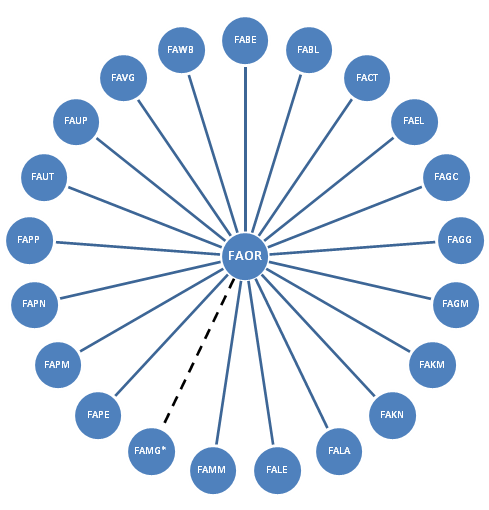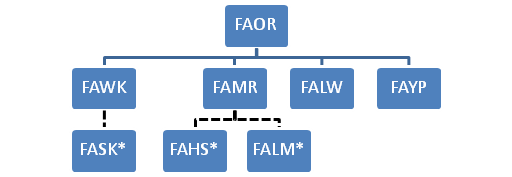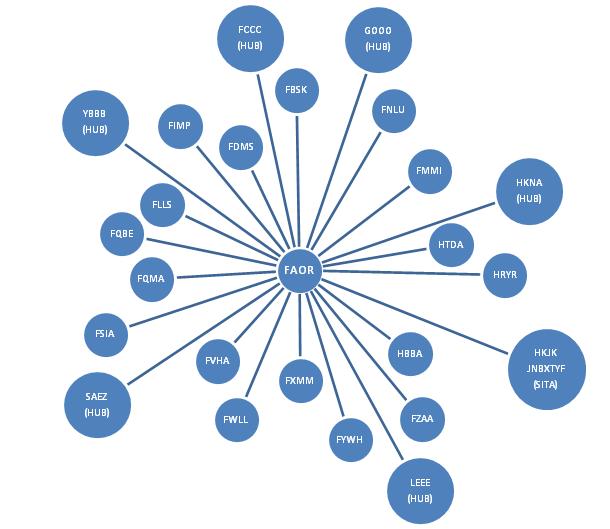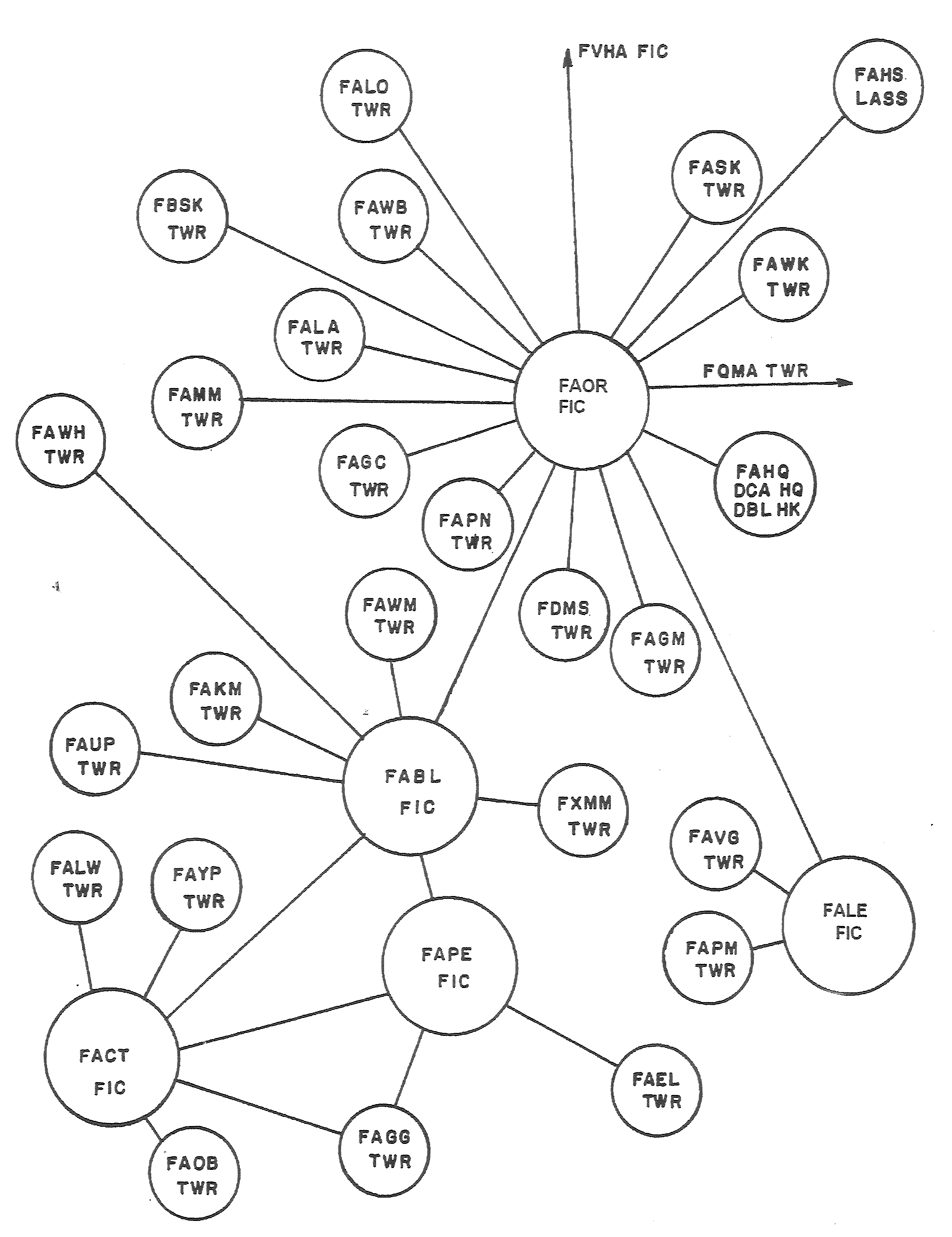GEN 3.4 Communication services
Telecommunication and Navigation Services are regulated by the South African Civil Aviation Authority, established by section 2 of the South African Civil Aviation Authority Act 1998 (Act number 40 of 1998).
Telecommunication and Navigation Services are provided by the Air Traffic and Navigation Services Company Ltd (ATNS) under authority of the Minister of Transport.
Regulating Authority:
Postal Address:
South African Civil Aviation Authority
Airports Department: Navigation and Communication
Private Bag X 73,
Halfway House
1685
Telephone: +27 11 545 1000
Telefax: +27 11 545 1465
AFS Address: FAHQYAYX
Website: www.caa.co.za
Service Provider: ATNS
Postal Address:
Chief Executive Officer
Air Traffic and Navigation Services Company Ltd
Private Bag x 15
Kempton Park
1620
Telephone: +27 11 607 1383/1382
Telefax: +27 11 607 1577
AFS Addres: FAATYFYX
The service is provided in accordance with the provisions contained in the following ICAO documents:
Annex 10 - Vol 1 & 11 - Aeronautical Telecommunication
Doc 8400 - Procedures for Air Navigation Services ICAO Abbreviations and Codes
Doc 8585 - Designations for Aircraft Operating Agencies, Authorities and Services
Doc 7030 - Regional Supplementary Procedures (COM Procedures for AFI)
Doc 7910 - Location Indicators
The following telephone numbers are to be utilised for satellite communication (SATCOM) purposes:
Johannesburg Oceanic: +27 11 928 6456
Johannesburg Filter: +27 11 928 6454
Cape Town Filter: + 27 21 937 1116
King Shaka Tower: +27 32 436 5002
Bloemfontein Tower: +27 51 503 7201/6
Port Elizabeth: +27 41 51 35851
It must be emphasized that these numbers are for emergency only, when all other airborne means of communication with the appropriate ATS unit have failed.
Enquiries, suggestions or complaints regarding any telecommunications service within the boundaries of the Republic of South Africa should be referred to the relevant Station Telecommunication Officer or to the Director of Civil Aviation
Facilities listed in the Republics FIRs but which fall within the boundaries of Lesotho and Swaziland are provided and administered by the following respective authorities:
Department of Civil Aviation
P.O Box 629 Maseru 100
AFS Address: FXMMYAYX
Commercial Telegraphic Address: Civilair Maseru
Civil Aviation Branch,
Ministry of Works and Communications,
P.O. Box 58,
Mbabane.
S Address: FDMBYAYX
Commercial Telegraphic Address:, MINWORKS MBABANE
The following types of radio aids to navigation are available:
DME - Distance Measuring Equipment.
ILS - Instrument Landing System.
NDB - LF/MF Non-directional Beacon
RSR - Route Surveillance Radar.
SSR - Secondary Surveillance Radar
TAR - Terminal Area Surveillance Radar.
VDF - VHF Direction-finding Station.
VOR - VHF Omni-directional Radio Range.
Radio broadcasting stations are not listed as it is considered inadvisable to use them for navigational purposes.
According to the judgement of the direction finding station, bearings are classified as follows:
Class A: Accurate to within +/-2 degrees.
Class B: Accurate to within +/-5 degrees.
Class C: Accurate to within +/-10 degrees.
Direction-finding stations have authority to refuse to give bearings or headings to steer when conditions are unsatisfactory or when bearings do not fall within the calibration limits of the station, stating the reason at the time of refusal
The use of GPS as a navigational aid has limited approval by the Civil Aviation Authority.
The aeronautical stations maintain a continuous watch on their stated frequencies during the published hours of service unless otherwise notified.
An aircraft should normally communicate with the air/ground control radio station which exercises control in the area in which the aircraft is flying. Aircraft should maintain continuous watch on the appropriate frequency of the control station and should not abandon watch, except in an emergency, without informing the control radio station.
Clearance delivery service.
At JOHANNESBURG/O R Tambo International Airport a clearance delivery service is provided. This service provides:-
Pilots should call on the appropriate frequency prior to start-up and pass the following information:-
Messages to be transmitted over the Aeronautical Fixed Service (AFS) are accepted only:
When it is desired that a communication exceeding 200 words be transmitted over the Aeronautical Fixed Service, such a communication shall be filed in the form of separate messages, each text of which does not exceed 200 groups.
General Aircraft Operating Agency messages are only accepted for transmission to countries which have agreed to accept Class B traffic.
AFS/SITA.
An AFS/SITA interface link is available at the O R Tambo ATC Communications Centre. In view of this, airlines entering or overflying the Republic of South Africa, are required to address their flight plans and other ATC movement messages to the following SITA address: JNBXTYF.
The O R Tambo ATC Communication Centre will ensure the onward transmission of these ATC messages via AFS within the Republic of South Africa. The above does not apply to those carriers whose flights depart from airports in the following countries: Zambia, Zimbabwe, Mozambique, South Africa, Botswana and Namibia. Neither does the above apply to those airlines in respect of which repetitive flight plans have been agreed upon.
The above is intended to reduce the difficulties currently being experienced by airlines and ATC due to ATC not receiving flight plans transmitted on AFS.
ATS DIRECT SPEECH CIRCUIT REPUBLIC OF SOUTH AFRICA/O R TAMBO INTL.
As no ATS Direct Speech Circuit currently exists between South Africa, Johannesburg ACC (Johannesburg Oceanic) and Madagascar, Antananarivo ACC and between South Africa, Johannesburg ACC (Johannesburg Oceanic) and South America, Brazilia ACC, Recife ACC (alternate) agreement has been reached to utilise the following Public Switch Telephone Network (PSTN) and fax numbers:
Antananarivo ACC Tel: 09 261 20 2233912
Brazilia ACC Tel: 09 556 1 365 1586 Fax: 09 556 1 365 1768
Recife ACC Tel: 09 558 1 462 2742 Fax: 09 558 1 462 4927
The ATS/DS and AFTN circuits between Johannesburg and Ezeiza (SAM) have now been implemented via the CAFSAT satellite network. These have been operationally tested.
ATIS broadcast are transmitted continuously throughout hours of service and are revised every 30 minutes, on the hour and 1/2 hour. Each broadcast is prefixed with an identifying letter in the phonetic alphabet, ALFA to ZULU
Broadcasts contain:
Aircraft having received the ATIS broadcasts are to inform Approach Control accordingly immediately after initial contact
The requirements and general conditions under which the communication services are available for international use, as well as the requirements for the carriage of radio equipment, are contained in the Air Navigation Regulations (ANRs) of the RSA - see sections referring to Aviation Act and Air Navigation
A - Arrival ATIS (ARR ATIS)
D - Departure ATIS (DEP ATIS)
C- Contract ATIS (Auto Update ATIS)
T - Terminate C mode (Terminate Auto-Update ATIS)
E - Not Used
Pilots of suitably equipped aircraft that cannot establish communication with data link ATIS should read the broadcast of the radio ATIS on the VHF frequencies.
Pilots shall inform the ATC at each airport of problems encountered during the provision or alternatively call the Johannesburg technical support help line on +27 11 928 6476/7.
NATIONAL CIVILIAN AFTN - SCHEMATIC

* FAMG is receiving only link utilising AFTN to e-mail
NATIONAL MILITARY AFTN - SCHEMATIC

*FASK, FAHS and FALM are connected via a dumb terminal and are receive only
REGIONAL AND INTERNATIONAL AFTN - SCHEMATIC

Aeronautical Fixed Service (Telephone)
ATS DIRECT SPEECH CIRCUITS
